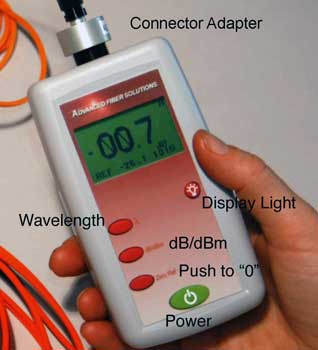Exploring fibre testing equipment and its importance in fiber optics
All You Required to Learn About Robotic Vision and Its Applications in Advanced Optical Measurement Equipments
Robotic vision stands for a substantial innovation in the junction of computer system vision, artificial intelligence, and machine discovering. This modern technology enhances the accuracy of optical measurement systems, making it possible for real-time data evaluation and boosted high quality control. Its influence spans numerous sectors, from producing to health care. The evolving landscape of robot vision increases inquiries regarding future abilities and applications. What technologies exist in advance in this transformative field?
Recognizing Robotic Vision: Key Concepts and Technologies
Robotic vision encompasses the innovations and approaches that enable equipments to translate and understand aesthetic info from their atmosphere. This area combines components of computer vision, synthetic knowledge, and device understanding to assist in automated decision-making based on aesthetic information. Secret concepts include photo handling, which entails the enhancement and evaluation of photos to draw out significant functions, and item recognition, which permits equipments to identify and categorize items within a scene.

The Assimilation of Robotic Vision With Optical Dimension Equipments
As industries progressively demand precision and effectiveness, the integration of robot vision with optical measurement systems has actually arised as a transformative method. This synergy permits robotics to view and interpret their surroundings, boosting the capability of optical measurement systems to examine and examine things with unrivaled accuracy. By outfitting optical sensors with advanced imaging technologies, robotic vision enables real-time information collection and handling, assisting in immediate changes to dimension specifications.
The mix equips automated systems to spot variants in measurements, surface quality, and positioning, which are crucial in quality control procedures. Enhanced formulas, such as artificial intelligence, further increase this integration by enhancing the systems' ability to adjust to various environments and scenarios. Consequently, the integration not just simplifies dimension processes yet also decreases errors, ensuring that products satisfy stringent industry standards, consequently solidifying the role of robot vision in the future of optical measurement systems.
Applications of Robotic Vision in Manufacturing
In modern production environments, making use of vision systems has actually reinvented manufacturing procedures by enabling devices to perform jobs with remarkable accuracy and rate. Robotic vision systems are increasingly utilized for quality assurance, where they evaluate items for issues and assurance adherence to specifications. These systems utilize cameras and advanced algorithms to examine products in real-time, considerably reducing the threat of human mistake.
Additionally, robotic vision assists in automation in setting up lines, enabling robots to precisely recognize elements and construct them with very little downtime. This innovation additionally boosts inventory monitoring, as vision systems can keep track of stock degrees and spot discrepancies, guaranteeing a smooth supply chain.
Robotic vision help in the execution of clever manufacturing facilities, where information from vision systems can be integrated with various other modern technologies to enhance process (optical measurement system). On the whole, the applications of robot vision in producing demonstrate its critical function in improving performance, top quality, and productivity throughout Discover More different sectors
Robotic Vision in Health Care: Reinventing Client Treatment

In recovery, robot vision help in keeping an eye on individual progress and customizing treatment sessions to individual requirements. It sustains physician by automating tasks such as information collection and patient surveillance, permitting even more time to concentrate on direct patient interaction. Additionally, robot vision enhances telemedicine by allowing remote medical diagnosis and digital examinations, bridging the void between clients and doctor. On the whole, the application of robotic vision in healthcare is changing person care, causing improved outcomes, efficiency, and client fulfillment.
Future Patterns and Growths in Robotic Vision Innovation
The fast advancement of robotic vision technology guarantees to additionally improve its applications throughout various industries, consisting of health care. Future trends suggest a considerable shift in the direction of integrating synthetic intelligence and artificial intelligence, enabling systems to learn from substantial datasets and boost accuracy over time. Improved sensor modern technologies and deep understanding formulas are expected to refine object acknowledgment abilities, allowing robots to interpret intricate atmospheres better.

The assimilation of augmented truth (AR) with robotic vision will likely reinvent how robots aid visit site in surgical procedures and diagnostics. This synergy will certainly facilitate real-time data visualization, improving decision-making processes. In addition, miniaturization of elements will result in more compact and flexible robot vision systems suitable for a selection of jobs. As these improvements unfold, industries will certainly witness raised automation and efficiency, solidifying robotic vision as a foundation of cutting-edge technical services.
Often Asked Inquiries
What Are the Main Components of a Robotic Vision System?
The primary parts of a robotic vision system consist of cams for photo capture, processors for data analysis, formulas for interpretation, and actuators for motion. With each other, these elements allow robots to view and interact with their setting properly.
How Does Robotic Vision Improve Precision in Measurements?
Robotic vision enhances measurement accuracy by utilizing innovative imaging innovations, enabling accurate item discovery and spatial evaluation. This capability lowers human mistake, boosts repeatability, and enables real-time adjustments, eventually improving overall dimension dependability and effectiveness.
What Industries Advantage The Majority Of From Robotic Vision Technology?
Different sectors benefit greatly from robot vision technology, consisting of production, health care, farming, and logistics. her response These markets make use of improved precision, performance, and automation, leading to improved productivity and reduced operational prices in their corresponding processes.
Can Robotic Vision Systems Operate In Low-Light Conditions?
Robotic vision systems can without a doubt function in low-light conditions, using innovative sensing units and algorithms to boost picture quality. This capacity permits them to do properly in various atmospheres, including commercial and monitoring applications, even with minimal lighting.
What Are the Costs Connected With Implementing Robotic Vision?
The expenses connected with executing robot vision differ significantly, influenced by elements such as electronic cameras, software program, and combination. Added costs consist of maintenance, training personnel, and possible upgrades to existing systems, which can accumulate gradually.